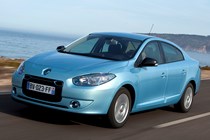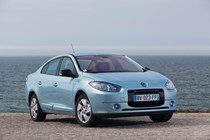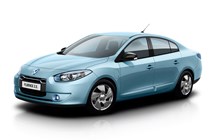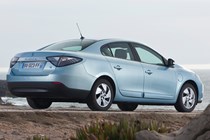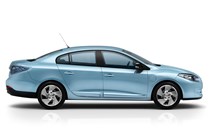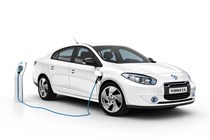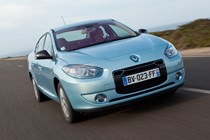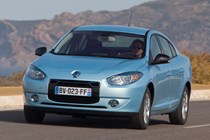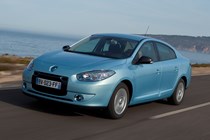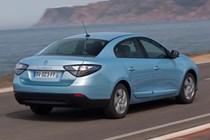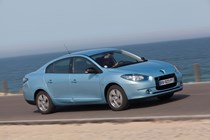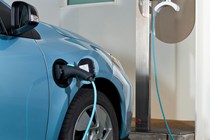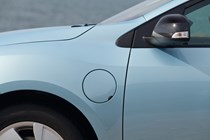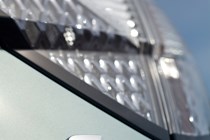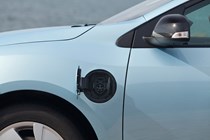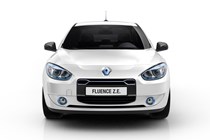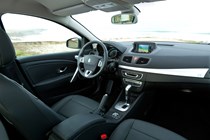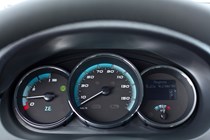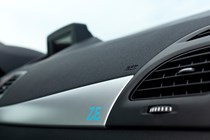
Renault Fluence Saloon (2012-2013) interior, tech and comfort
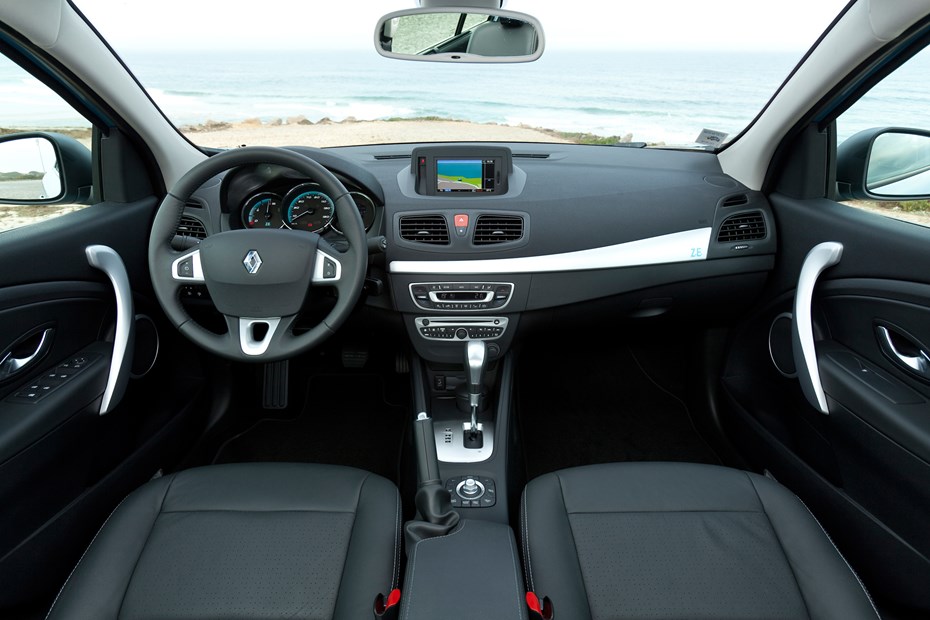
The electric Fluence features a dashboard and interior that’s similar to the rest of Renault’s 2011 range. That might appeal to some but equally might disappoint those who want something a bit more special and unique. Unlike the Vauxhall Ampera or Nissan LEAF, there’s little in the way of space-age looks or style. It is, however, solidly built. The dash is clearly laid out and the majority of controls sensibly positioned.
Visibility is good, which makes the Fluence easy to manoeuvre around town and through traffic. There are a few negatives, unfortunately. Some of the plastics, particularly those around the gear lever, are a little thin feeling and easily marked. The cruise and speed limiter activation switches are placed behind the gearlever, while the rest of the controls are on the steering wheel.
This means you have to take a hand off the wheel if you want to use these features. There are no one-touch indicators either. The sat-nav, while effective and relatively clear, also looks like an afterthought and is not particularly well integrated with the dashboard. Lastly, the steering wheel does not adjust for reach – only for height.
Inside, the Fluence Z.E. is much the same as the Megane hatchback. There’s plenty of space but rear headroom is restricted and taller passengers won’t be happy. Five adults can be seated, at a push, but they’ll probably only want to endure short trips. Rear passengers, however, do get a centre armrest with integrated cup holders and adjustable air vents.
The part-leather seats are all relatively comfortable but don’t have sufficient side bolstering, meaning you can move around during cornering. On the road the electric Fluence is very refined, with only some slight tyre and wind noise. There’s also a distant hum from the motor, but this is barely noticeable. Renault claims it’s around 50% quieter inside, at certain speeds, than the conventional diesel version.


